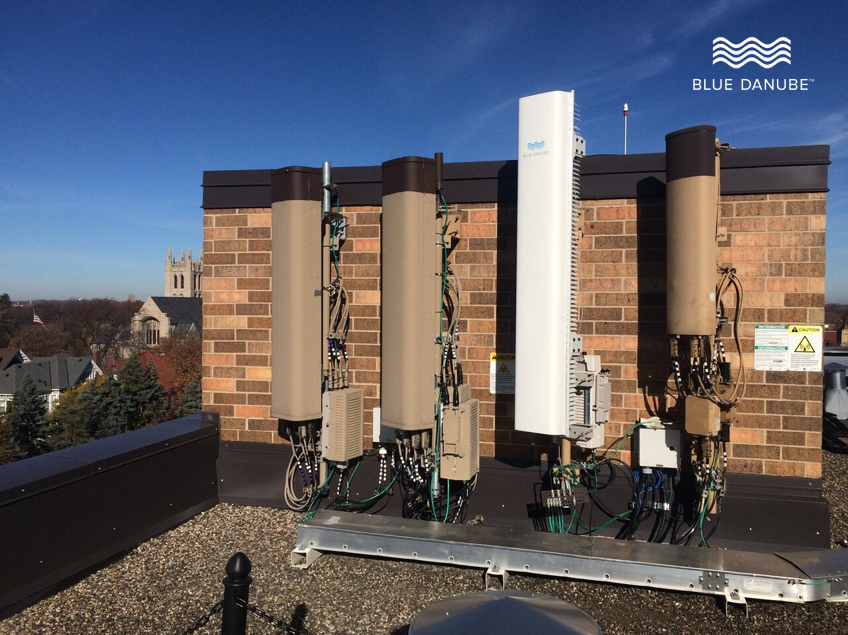
Credit: Blue Danube. AT&T FDD massive MIMO installation
Mobile wireless access solutions company Blue Danube on Thursday revealed it has been running commercial trials of its new massive MIMO system on licensed frequency division duplex (FDD) LTE spectrum in collaboration with AT&T and Sprint subsidiary Shenandoah Telecommunications (Shentel).
Blue Danube claimed the trials mark the first commercial test of an FDD Massive MIMO system for deployment in current LTE networks.
According to Blue Danube CEO Mark Pinto, the trials kicked off back in September 2016 and were conducted with AT&T using AWS-3 spectrum from a rooftop in St. Paul, Minnesota and Shentel using 1.9 GHz PCS spectrum from a tower in rural Virginia. The system supported more than 10 TB of data during the three-month trial period, Pinto said.
The 96-element BeamCraft 500 system used in the trials is based on Blue Danube’s High Definition Active Antenna System (HDAAS) technology, allowing it to offer a two- to fivefold improvement in throughput, as well as a twentyfold improvement in instant video throughput for 1080p HD videos in locations where existing systems were previously only capable of 144p. A second phase of trials is currently underway to test additional operational modes and traffic scenarios, the company reported.
Three additional trials – two in Europe and one in Australia – are planned for 2017, Pinto revealed.
Unlike massive MIMO systems from other vendors, Pinto said Blue Danube’s system is what is known as “hybrid massive MIMO” – that is, it mixes analog and digital beamforming. Pinto said the hybrid nature of the system allows for the formation of very precise beams, as well as lower cost, and high power capabilities up to 160 Watts. Additionally, the system was designed to fit perfectly into the profile of an existing passive antenna to make sure carriers aren’t inhibited in deployment by power companies, zoning, or other regulations.
Pinto observed the system brings benefits to both rural and urban environments, on one hand providing the ability to extend a tower beam much further out in rural environments and on the other helping alleviate congestion in dense urban environments. The company also emphasized the system’s ability to handle video traffic to reflect the fact that video content is expected to account for 75 percent of mobile data traffic by 2022.
“The versatility of this advanced antenna system has provided a dramatic performance improvement in our commercial network by dynamically increasing RF energy in problem areas without impacting neighboring sites,” Shentel’s Senior Vice President of Wireless Willy Pirtle commented.
Though Pinto said Blue Danube is planning to develop a similar time division duplex (TDD) system later on, he noted the company targeted FDD first to address a pressing need to accommodate pre-5G needs.
“Instead of waiting for 5G, mobile operators are upgrading thousands of TD-LTE base stations with Massive MIMO this year,” Joe Madden, founder and Principal Analyst at Mobile Experts, observed. “It’s an exciting development which, as it gains momentum, may be able to leap into the FDD market as well. Blue Danube’s recent FDD field trial results using simple modules are very promising, and represent a big step toward cost-effective FDD and 5G solutions.”
Pinto said the BeamCraft 500 system will be available in the first half of 2017, and a physical sample will be on display at Blue Danube’s booth at Mobile World Congress later this month.
Filed Under: Infrastructure




